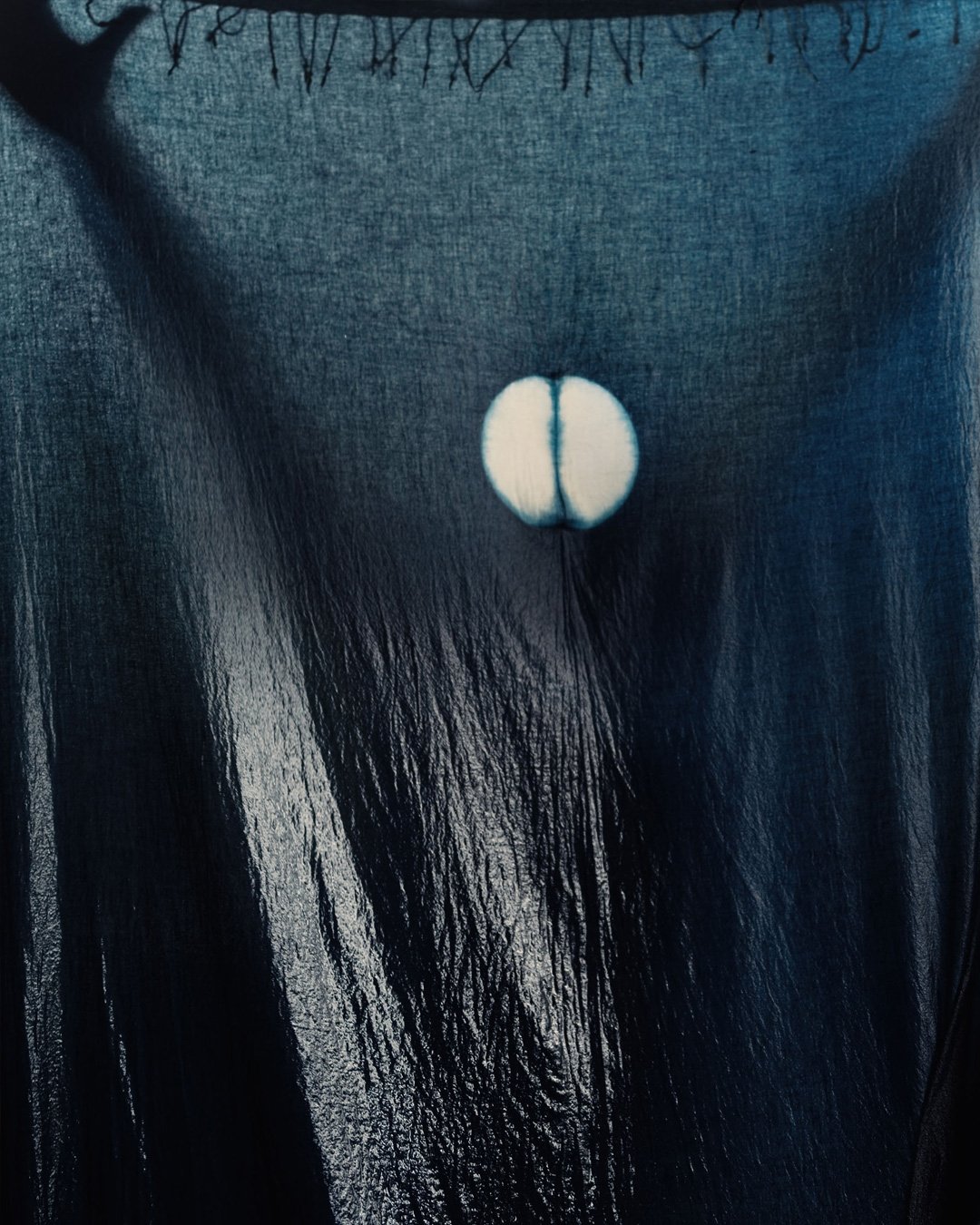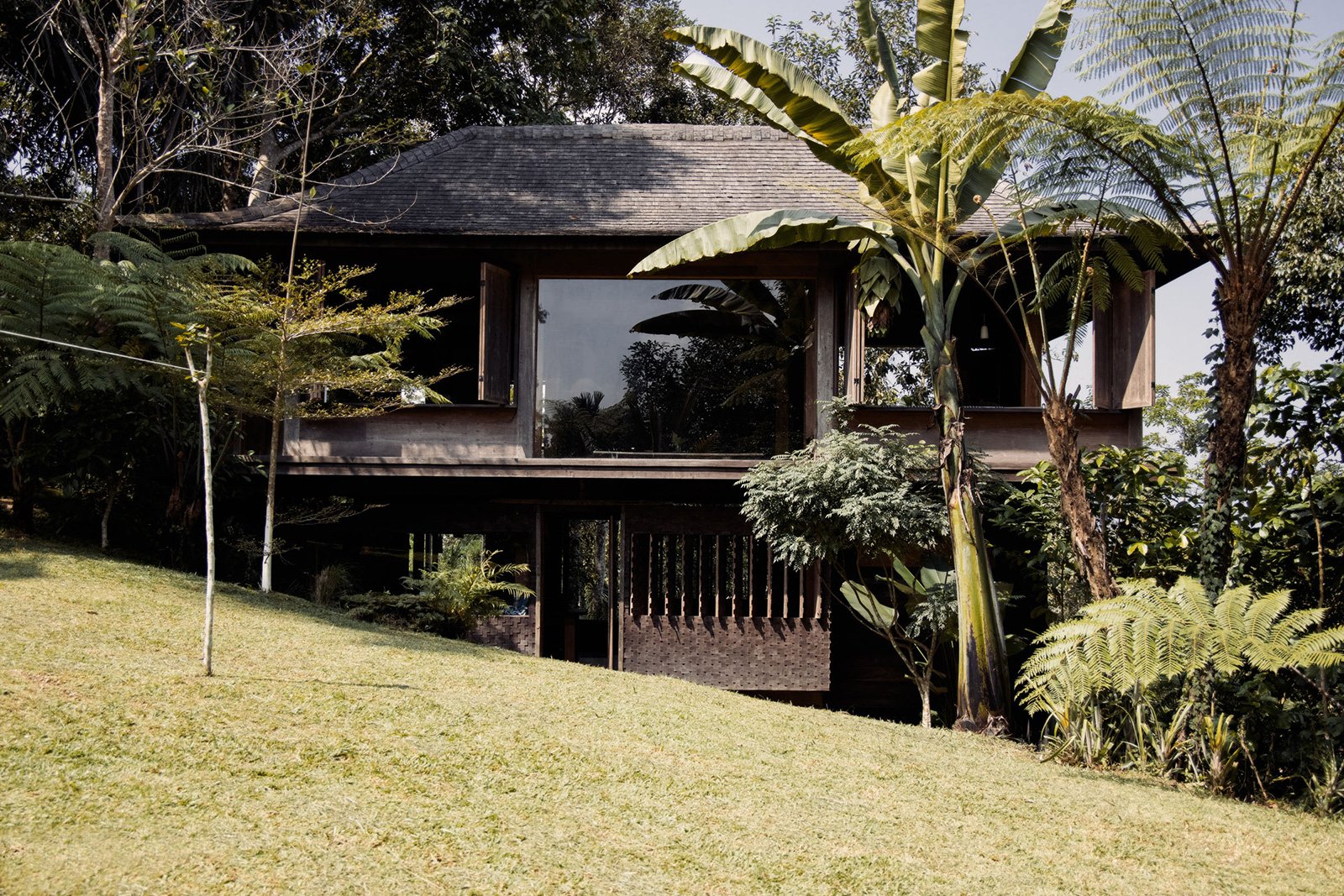
TIANTARU’S SEBASTIAN MESDAG:
“THE PRACTICE AND SLOW PROCESS OF INDIGO
DYEING IS A MEDITATION AND A WAY OF LIFE.”
As his Tiantaru indigo farm and workshops continue to inspire creatives to connect with nature to further their craft, Sebastian Mesdag speak to us about his journey, settling in remote Bali, discovering indigo dyeing and the beauty of art and community.
—
All photography by Zissou
Tiantaru staff harvesting indigo plants.
Erika Kurihara: Please tell us your journey discovering indigo plant dyeing and how it brought you to Bali. I know your work as an artist first brought you to India.
Sebastian Mesdag: I first discovered indigo dyeing in India in 1998 after finishing my art degree at both Saint Martins in London and Parsons in Paris. Not happy with the oil paints I was using for my work I wanted to learn more about natural dyes. I first visited Bali in 1989 as a young kid to see my uncle. He had spent his youth there in 1937 before being captured by the Japanese and ending up spending 3 years in a prisoner of war camp. He decided to return to Bali and build a home north of Ubud. As a young teen I was fascinated by the films he showed us from when he lived in Bali in the late 1930’s and I started to collect textiles and other antiques during my visits. I kept returning to Bali often until I moved there in 2004.
EK: How did you choose the area you settled in in Bali? What were the first impressions of the local people from the Banjar? How were the first years trying to build what came to be the beautiful Tiantaru estate?
SM: After looking for 2 years for a place to settle, the owner of the land I was about to buy visited my uncle’s house, now owned by my cousin and where I was staying. I wanted to be far enough out in the jungle to experience the same feelings I had when I visited my uncle. I wanted a place at a dead end road and to immerse myself with the local community and not be surrounded by foreigners but still close enough to have some communication. So in a way the land chose me. Due to its logistics and only a dirt road and no electricity, at the time, the building work took 6 years. I liked the area for its rainfall views and quietness. Being one of the wettest areas in Bali and coming from Spain where it slowly is becoming a desert I knew I wanted a place where everything would grow naturally without irrigation. The first years were not easy, but one quickly learns the language and with the help of local friends and my wife Ayu we accomplished more than we could have dreamt of. Working with the village we quickly got to meet the 15 families, and working with other skilled craftsmen who always find a way to translate your vision was a pleasure. At that time not many people were using old Joglos and to find wood was somewhat easier and much cheaper. The wood we found organically built the walls around the house and the project really developed slowly as the years went by.

The Tiantaru indigo studio.
EK: How did you compose the Tiantaru workshop experience? Did anyone inspire you?
SM: About 12 years ago a friend gave me 3 indigo branches and told me to try. We planted them and kind of forgot about the plants. A few years later we saw they had grown well and we started to cultivate them and experiment. The first tries were a failure until about 5 years ago when, with a friend, we got the recipe right. We had not seen or been to other workshops at the time but found that what was available was not really what we wanted. We wanted people to immerse themselves to connect to the real Bali and to get inspiration to create their own studios using natural dyes. Having worked with many dye plants in the past, indigo I found was the most challenging. What we loved about this variety of indigo was that it needs a forest to flourish, that is it cannot grow as a mono crop. This allowed us to create a forest and let local trees also grow naturally around our property. Being a keen gardener and having a passion for both textile and natural dyes all merged beautifully and we wanted to share what we have learned openly with likeminded people and open our home and host people as friends.
EK: What have been the greatest insights or experiences when holding the workshops?
SM: Seeing people amazed when unfolding their finished textiles and writing to us about their experiences has made it worth our while. People seem to forget the importance of using their hands and creating something unique that they can have a connection with. In a world where the majority buy and throw away, one is less reluctant to do so when they have created it with their own hands. As an artist it is inspiring to surround yourself with creatives. We now do 3-day workshops for artists to delve deeper into the world of indigo and use the medium in their work.
EK: Why is indigo plant dyeing important? What are your hopes for the future of Tiantaru and indigo plant dyeing?
SM: Indigo dyeing is important as it is a non-toxic way of dyeing and brings new possibilities to farmers and the village. We still work closely with the old owner of the land and work with the village. Due to the conditions it needs to grow, the environment around it is enriched and the soil improved. My dream is to continue planting forest and indigo below and getting more of the village involved and one day to create artworks again using indigo. We hope to keep inspiring people and working with artists from around the world. Every artist pushes us deeper into experimenting with this medium and understanding it more. We also hope to invite indigo masters from around the world to teach at the studio. The beauty of indigo dyeing is that there is always more to learn and the practice and slow process becomes a meditation and a way of life.









